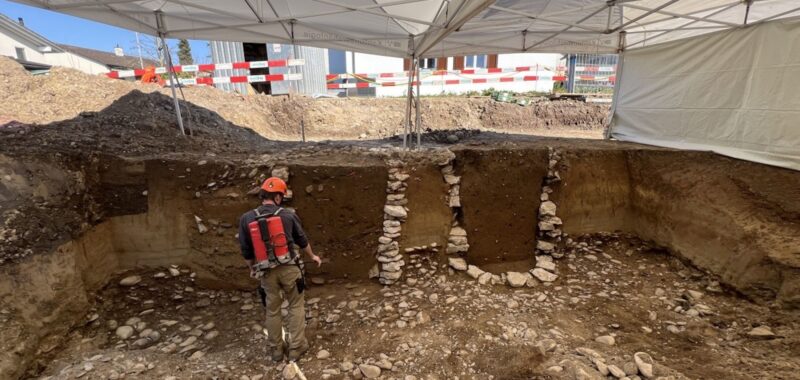A nearly yearlong excavation project in northern Switzerland is offering a glimpse into life in some of the Roman empire’s furthest northwestern settlements. These 2,000-year-old remains of Augusta Raurica were uncovered before construction began on a multifamily housing unit near present-day Basel. The intriguing archeological finds here depict how even the major settlement’s earliest years featured intentional urban planning strategies and sophisticated building plans, as well as residents who adhered complex cultural traditions regarding death and grief.
It’s difficult to envision just how far the Roman empire’s reach extended at its peak. During Trajan’s reign from 98-117 CE, Rome and its territories encompassed an estimated 1.9 million square miles stretching north to Britain and westward to the Caspian Sea in present day Albania. The furthest reaches weren’t necessarily undeveloped regions, either. Located about 12.5 miles east of Basel, Augusta Raurica eventually saw as many as 20,000 inhabitants at the commercial hub’s apex during the 2nd century CE. However, Augustica Raurica’s city planners laid the groundwork for its prosperous future decades before its ascendancy.


Experts at the canton (province) of Aargau’s archeological department began excavation work in May 2024, after construction officials discovered evidence of buried structures in what was once Augusta Raurica’s lower town. After planning their dig around prior geophysical surveys in 2019, 2021, and 2023, the archeologists began to meticulously unearth the newest finds. These eventually included the remains of a roughly 14-foot-wide Roman road displaying indications of multiple renovations, along with flanking drainage ditches. Both sides of the street also featured columned open-air halls known as porticoes beside the cellars of strip houses, or narrow homes that were popular at the time in northwestern Roman provinces.
According to the canton of Aargau’s April announcement, archeologists concluded this quarter of Augusta Raurica began development towards the end of the 1st century CE and lasted around 200 years. Evidence for this dating includes finds such as numerous late Roman coins and rare relics, including a mosaic glass spindle whorl used for spinning yarn, a votive holder made from volcanic rock, and an extremely well-preserved bronze panther statuette.

But it’s what experts found interred near the street’s strip homes that showcased some of the era’s deepest and moving traditions. Infant graves were included in several of the dwellings’ rear courtyards and even the buildings themselves. Roman tradition during that time frequently involved burying a family’s deceased young either inside their house or behind it.
“The graves bear witness to the care of the dead and provide evidence of the high infant mortality rate during this period,” the announcement explained.

The project also marks the first time that the Aargau Cantonal Archaeology Department conducted a full site digital documentation of the area potentially setting a new standard for future excavation work. Until then, the last few months’ of careful analysis will continue to help expand our understanding of Roman life at its most distant locations.


